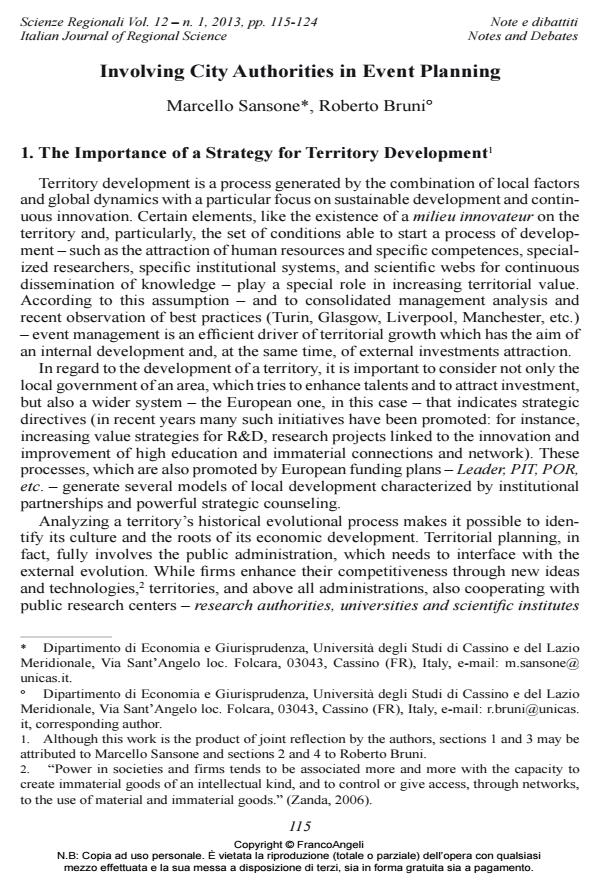Involving City Authorities in Event Planning
Journal title SCIENZE REGIONALI
Author/s Marcello Sansone, Roberto Bruni
Publishing Year 2013 Issue 2013/1
Language English Pages 9 P. 115-123 File size 188 KB
DOI 10.3280/SCRE2013-001006
DOI is like a bar code for intellectual property: to have more infomation
click here
Below, you can see the article first page
If you want to buy this article in PDF format, you can do it, following the instructions to buy download credits

FrancoAngeli is member of Publishers International Linking Association, Inc (PILA), a not-for-profit association which run the CrossRef service enabling links to and from online scholarly content.
Marcello Sansone, Roberto Bruni, Involving City Authorities in Event Planning in "SCIENZE REGIONALI " 1/2013, pp 115-123, DOI: 10.3280/SCRE2013-001006